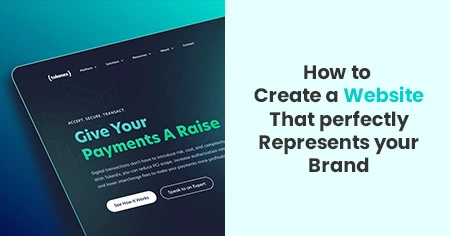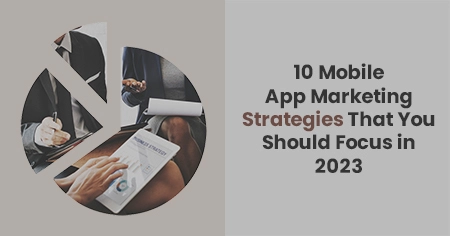A website consistent with your brand's image and personality is significantly more effective than a website that looks nice.
A website that is inconsistent or ignores your brand image is a missed opportunity to influence the general perception of your brand.
Most of us understand website development is essential to any small company strategy. A website creates your company's online presence and is a valuable resource for acquiring leads and moving clients through the sales funnel.
A website helps to improve consumer relationships and establish trust. Your brand may become your customer's closest friend if it has a personality that resonates with your target market and speaks to its values and desires.
How do you create a website for your company? This article will discuss a step-by-step guide to developing a website that perfectly represents your brand.
Here are the following steps that help you to create a Website that perfectly represents your Brand:
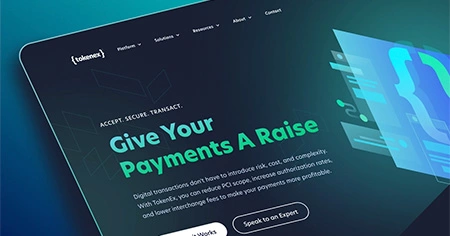
Step 1: Have a clear vision and plan.
The first step in creating a website is to have a clear and coherent plan. Whether creating a website design company, e-commerce website, or a personal endeavour, this is true - you must begin with a strategy. Make a list of specific goals for your website. Why are you doing it? Who is your target market? What are you hoping to gain from it - leads, revenue, downloads, clicks, engagement, or a wider audience? The clarity in these areas is essential when confronting the question of 'how to create my website?'
What is the goal of your website?
- Do you want to start a blog to express your experiences, share news, and establish a community?
- Do you want to create a portfolio website? Check out our advice on how to construct an online portfolio.
- Do you want to open an online store to sell your artwork quickly? Then look at these fantastic internet stores created by professionals and small businesses.
- Do you want to build a company website? Then, take a look at these Pixpa-powered business websites.
- Do you want to develop client galleries so that you may share, sell, and send your photographs to clients? Learn how to establish dedicated and mobile-friendly client galleries.
Set your goals and pick what website will best represent your brands online presence.
Step 2: Research your competitors and your target audience.
Before you decide how to create a brand, you must first understand the current market, including your potential customers and competitors.
There are several approaches to this:
- Search your service or product category and examine the direct and indirect rivals.
- Shop online or in-store to learn how your consumers research and buy things.
- Investigate subreddits connected to your clientele and pay attention to their product recommendations and discussions.
- Inquire with people in your target market about the brands they use in your sector.
- Examine the social media accounts and websites your target audience follows and responds to.
Step 3: Know the latest Trends
Using last year's popular concepts makes a website appear antiquated. Instead, spend some time exploring your favourite websites and keeping an eye on what has lately been updated. Is there anything that piques your interest? What exactly did they do? Have you come across any newly upgraded websites? You don't have to do it alone when it comes to current trends, but it all starts with keeping your eyes open.

Web design trends span from navigation animations and layouts to basic things like colours and word art. However, many of the elements you select for your website will be related to your website Design Company rather than trends.
Step 4: Choose your website builder.
After you've determined your goal, the next step is to find the best website builder to help you achieve it. A website builder (also known as a content management system or CMS) is a platform that allows you to create, customize, and publish a website without learning how to code.
Step 5: Define your layout
Once you've logged into your preferred platform, it's time to plan your website's layout. If you want to start from scratch, draw your website's design on paper before dropping and dragging. Another alternative is to utilize a template, a pre-designed layout developed by a professional website design company.
Step 6: Figure out how much the website will cost
Most people require more web design knowledge and must rely on a professional or a freelancer web studio, both costly options. Depending on the website you desire, the cost of designing one ranges from a few thousand dollars to $15,000 or more. The second option is a great website builder, allowing you to tailor your page for a custom look while being drag-and-drop simple to produce. Finally, using high-quality website builders, you may design a professional website with all the needed features on one seamless, durable platform.
Step 7: Brand It Your Own
You don't have to preserve every piece of your site because it's based on a professionally designed template.
Brand identity is a critical component of the marketing presence of your website. However, it would help if you spent time developing a cohesive plan.

The URL you pick is critical. It ought to be essential, original, and unforgettable. Graphic designers may create a collection of brand-identification products to help you market yourself or your goods.
Videos and photos can play an essential role in your web brand. Visitors are influenced by banner and landing page visuals. However, securing your brand legally is equally important. Registering your business, such as an LLC formation, not only protects your brand name but also establishes credibility and trust with investors and customers. A legally structured business adds professionalism to your identity, reinforcing your brand’s long-term stability
Step 8: Register your domain name
A domain name serves as your internet address. It will appear in the address bar of your visitors' browsers right after the "www."
Registering your domain name is critical for online success. Internet consumers regard websites with a custom domain as more professional and trustworthy.
When a domain name is chosen wisely, it also helps search engines (such as Google and Bing) comprehend what your website is about.
Step 9: Add Content to Your Website
It's time to start adding items now that your site is mainly set up how you want it. Your product might be your work portfolio or tangible things you intend to sell. Decide how you want them presented, whatever they are. Remember only to feature high-quality material on your website.
Step 10: Add the correct page
Every business is unique, and so is every website. Here are some must-have pages for a multi-page website design:
About Us page: Discuss your beliefs, tell your story, processes, and any other information that characterizes your brand. Use the first person ("I" or "We") to greet new guests since it offers a welcome touch of friendliness and warmth.
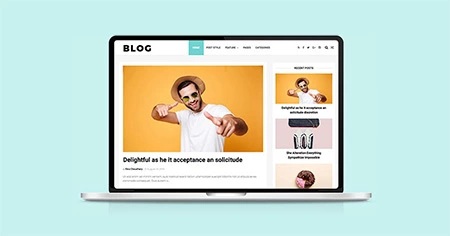
Homepage: You only have one chance to make an excellent first impression, and that is on your homepage. Because the homepage is likely to be the first thing visitors see, it should be well-organized, clean, and visually appealing.
Your service or product page: The service page (or product page, depending on your industry) is where your visitors learn about what you have to offer before pulling out their credit card and making a purchase.
Contact page: When visitors wish to contact you, they should be able to do so effortlessly. That's where a contact page comes in. Include your business email address, postal address, phone number, and social media accounts.
FAQ page: A page is a dedicated page on your website that provides consumers with quick and straightforward solutions to frequently asked questions in a structured and organized manner.
Step 11: Add a Blog to Your Website
A blog may be an efficient marketing tool even if you are not a blogger. Blogging allows you to interact directly with your customers. If you blog on a technical subject, your readers will see you as an expert. Utilizing your blog for social networking postings and website design company updates keeps you interested and your website current.
In addition, blogs give free marketing for your website Design Company and brand, so not having them is throwing away free marketing.
Step 12: Add a Testimonials Page
An honest testimonials page is a very effective addition to your website design. According to studies, 77% of pleased clients would suggest your business or service to a friend after having a favourable experience. If the goal of your website is to attract new consumers, use the power of word-of-mouth and allow your pleased customers to do the selling for you.
Step 13: Design your website element
You've prepared your content, registered your domain name, and designed your website's pages. It's now time to start.
Here are some things to practice when learning how to design a website:
Website design: To give visitors the best website navigation experience, your pages must be correctly connected. By including a navigation menu and using internal connections, you can ensure that users can reach the required pages.
Menu: This vital aspect of your design will display the many products on your website, ensuring visitors can quickly locate and move from one page to the next. Website menus range from the typical horizontal header to the compact hamburger menu.
Typefaces: When selecting typefaces for your website, use ones that are readable (on both mobile and desktop) and consistent with your brand identity.
Colour: Colour psychology demonstrates that different hues affect human behaviour, which is why colour psychology is an essential component of website design. When selecting your website colour scheme, a general rule of thumb is to stick to three shades: one secondary colour (30%), one primary colour (60% of the mix), and one accent colour (10%).
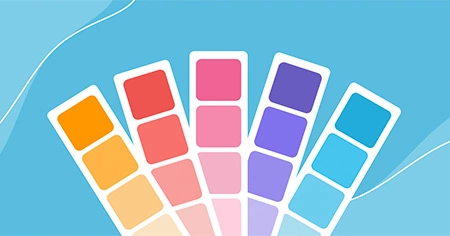
Header and footer: Your website's footer and header are located at the top and bottom of your website, respectively.
- While a website footer may not be visible initially, it can assist your visitors in various ways. Including your social networking links, contact information, or an email sign-up form is a beautiful area.
- A website header is an excellent spot to put items you want visitors to notice right away, such as your navigation menu or logo.
Motion: Motion refers to your website's non-static features, which may be helpful when attracting visitors' attention. A motion may take numerous forms, sizes, and placements in your website design.
Scroll effects: Scroll effects occur when visitors scroll up or down, as the name indicates. Their sophistication can draw attention, but more importantly, it helps to create a smooth transition between the various layers of a website page.
Whitespace: Whitespace is the section of your webpage that contains nothing. Are you scared of all this space? Do not be that way. To begin with, despite its name, white space does not refer to the lack of colour but to negative space.
Favicon: A favicon is a little icon that will be used in a web browser to "represent" your website. If you glance up at this tab in your browser for a second, you'll notice a small Wix emblem in the left-hand corner - a favicon.
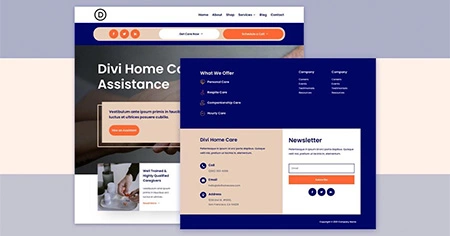
Step 14: Publish
You've chosen a domain name, developed, and branded your website. Your stuff is present, and you like how it appears. It's finally time to go live and publish!
Step 15: Make it accessible to everyone
Nowadays, everyone should be able to access a truly fantastic website design. Web accessibility ensures that everyone can enjoy and interact with your website regardless of ability. This includes persons with temporary injuries, hearing loss, impaired vision, and other disorders. With over one billion individuals living with some handicap, meeting everyone's needs is critical. In addition, it demonstrates that you and your website design company support inclusion and diversity.
Step 16: Optimize for mobile
Smaller displays do not imply less effect. However, with the increased use of tablets and smartphones, your mobile website design must be optimized to provide a consistent browsing experience across all platforms.
Step 17: Strengthen Your SEO
It's time to boost your SEO after your site is online and tested. SEO is an abbreviation for search engine optimization. Creating a website design that follows SEO best practices is one technique for increasing traffic to your website.
Step 18: Ask for feedback
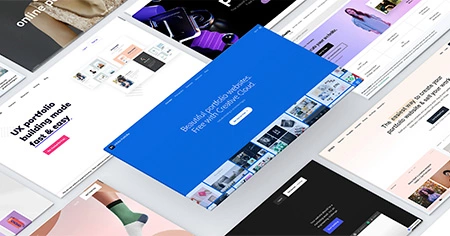
You may know how to build a website successfully, but there is still potential for improvement. Being impartial is especially difficult when it comes to your work, which is why creating a website requires getting honest feedback from people you trust.
Step 19: Publish and update
A website is a must. However, having an up-to-date website is what truly makes the difference. A website that appears to have been idle for an extended period needs to be more credible and trustworthy.




